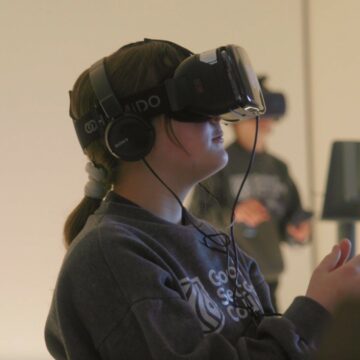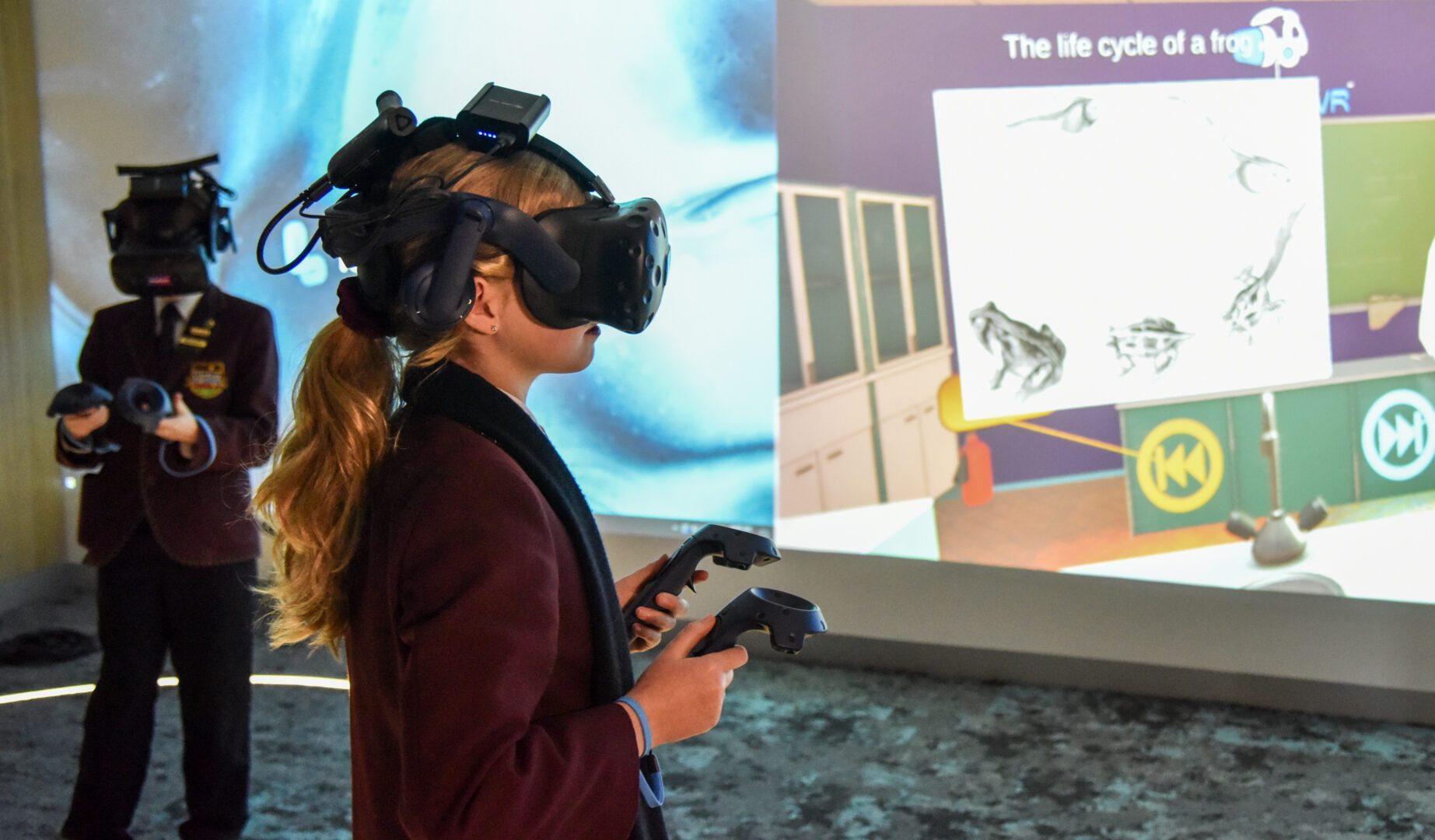Can virtual reality be effectively used in teaching students empathy?
In our latest case study with Goolwa Secondary College (GSC) we looked at VR and its impact on empathy and engagement in the classroom.
After completing a 10-week unit on empathy using the Perth Empathy Scale (PES), there was a 12% increase of students’ overall ability to empathise. Let’s dive into how we got there.
Overview: The Empathy in VR Pilot Project
The Empathy in VR Pilot Project*, an initiative co-designed between Lumination and GSC, looked at the use of immersive technologies in developing the central concept of empathy for middle school students. Our key question?
Can virtual reality (VR) be effectively used in teaching students empathy?
The students used GSC’s Lumination Learning Lab to complete the unit — an automated, multi-purpose and immersive smart classroom that encompasses virtual and augmented reality technology. The pilot also measured student engagement.
*Please note this was a pilot project, not a full case study. Further research is needed to quantify the full impact of the program.
Why do students need empathy?
Research shows that empathy is a powerful social tool, and according to some studies, students who have higher levels of empathy also exhibit the following traits:
- More classroom engagement
- Higher academic achievement
- Better communication skills
- Lower likelihood of bullying
- Less aggressive behaviours and emotional disorders
- More positive relationships
The details: Implementation and measurement
How was this empathy unit implemented and measured?
The 10-week unit was designed by Shai Coggins, Learning Design Lead at Lumination, and was adapted and implemented by Joseph Davidson, Teacher at GSC.
Here’s what you need to know:
- The course was a Studio Class focused on the development of empathy, which would now include a 10-week unit completed using virtual reality.
- It ran over 10 weeks for 1.5 hours per session with a group of 10 to 11 middle school students.
- To gain baseline data, the students filled out the Perth Empathy Scale (PES), a 20-item self-report assessment scale that measures overall ability to empathise both on a cognitive level and an emotional level.
- The same scale was administered partway through the program, and finally, at the end of the program.
- In terms of student engagement, the pilot project aimed to investigate immersive learning apps and tasks that inspire such engagement. Each week’s activities were rated on a 10-point scale by the teacher in relation to student engagement.

Building empathy in VR: Themes and real world experiences
To introduce the concept of learning about empathy, the students went through VR experiences across a variety of themes, including:
- “The Gift of Water,” aiming to get students to see how water as a resource doesn’t come easily for everyone.
- “The Gift of Sight”, focusing on helping students have a better understanding of visual impairment.
- “The Gift of Clean and Safe Environment,” looking at the UN’s Sustainable Development Goal (SDG) number 12, Responsible Consumption and Production.
- “The Gift of Peace”, showcasing the issues of migration and racism during World War 2.
- “The Gift of Freedom”, outlining the effects of war and imprisonment.
The students used the handheld VR technology to learn more about real people facing these issues, then went into the IMVR to experience things like colour blindness, sort recycling, search for water sources and so on.
Halfway through the unit the focus shifted to creation activities, with the focus on having students design a VR experience that can help others to develop empathy.
Some examples of student projects that were designed through this project include:
- How deaf students can understand teachers’ instructions in the classroom.
- How students might feel when they feel time pressure from teachers.
- How students might feel when running from one classroom to another.
Exploring current research on empathy and VR
According to one research study about using VR to develop empathy towards the ocean, it was found that viewing “future scenarios in VR fostered empathy for the ocean in the research participants. That is, empathy significantly increased at post-test as compared to pre-test.”
Other similar research also found that “virtual reality can help encourage greater empathy between individuals — whether to better understand the life of an unhoused person, gain insight into elderly people’s experiences, or to appreciate other cultures, to name a few.”
In the Australian Curriculum, empathy falls within General Capabilities under Personal and Social Capability’s elements of ‘Social awareness’ and ‘Social management’, as well as Intercultural Understanding’s element of ‘Interacting and empathising with others’.
Empathy is also the first key concept in the Design Thinking Framework, which is one of the learning frameworks in Lumination Learning Labs. Design Thinking is also one of the key ideas in the Technologies learning area of the curriculum.

What the research says about student engagement and VR
Studies suggest that 92% of teachers see student engagement as a key driver of learning success. Student engagement is another area explored in this project.
One study conducted at Cornell School shows how collaborative efforts by students using VR increase student engagement, as it allows them to mimic solving real life problems in a virtual environment.
EdGlossary also shares the belief that in education, “when students are inquisitive, interested, or inspired, and that learning tends to suffer when students are bored, dispassionate, disaffected, or otherwise ‘disengaged’.” Therefore, it is seen that stronger or improved student engagement are common and valid learning objectives.
Findings and opportunities: Increasing empathy in VR
Looking at the results from the Perth Empathy Scale (PES) conducted three times with the students who participated in this project, we can see a 12% increase of students’ overall ability to empathise in just 10 weeks. This result was reflected in various anecdotal reports from the teacher, as well as the quality of ideas from their ‘Empathy Scene in VR’ project.
The average student engagement across 7 weeks was 70% based on informal feedback from the teacher. Our next step is collecting comparative data with other schools.
Davidson’s report noted the top two experiences for his students were:
- Experiencing colour blindness through the app — students were able to express the desired outcome of gaining a better understanding and empathy towards vision.
- The “Book of Distance” app, an interactive virtual pilgrimage offering an emotional journey through immigration. Participating in this exercise, a number of students began to recognise their personal barriers to feeling and developing empathy.
Further research is needed to see if comparative results may be collected, but this work offers a great starting point to better understanding how VR can increase empathy for students.
To find out more about implementing VR and AR in your classroom, book a demo. To stay up to date on the latest in immersive EdTech, subscribe to our newsletter.





